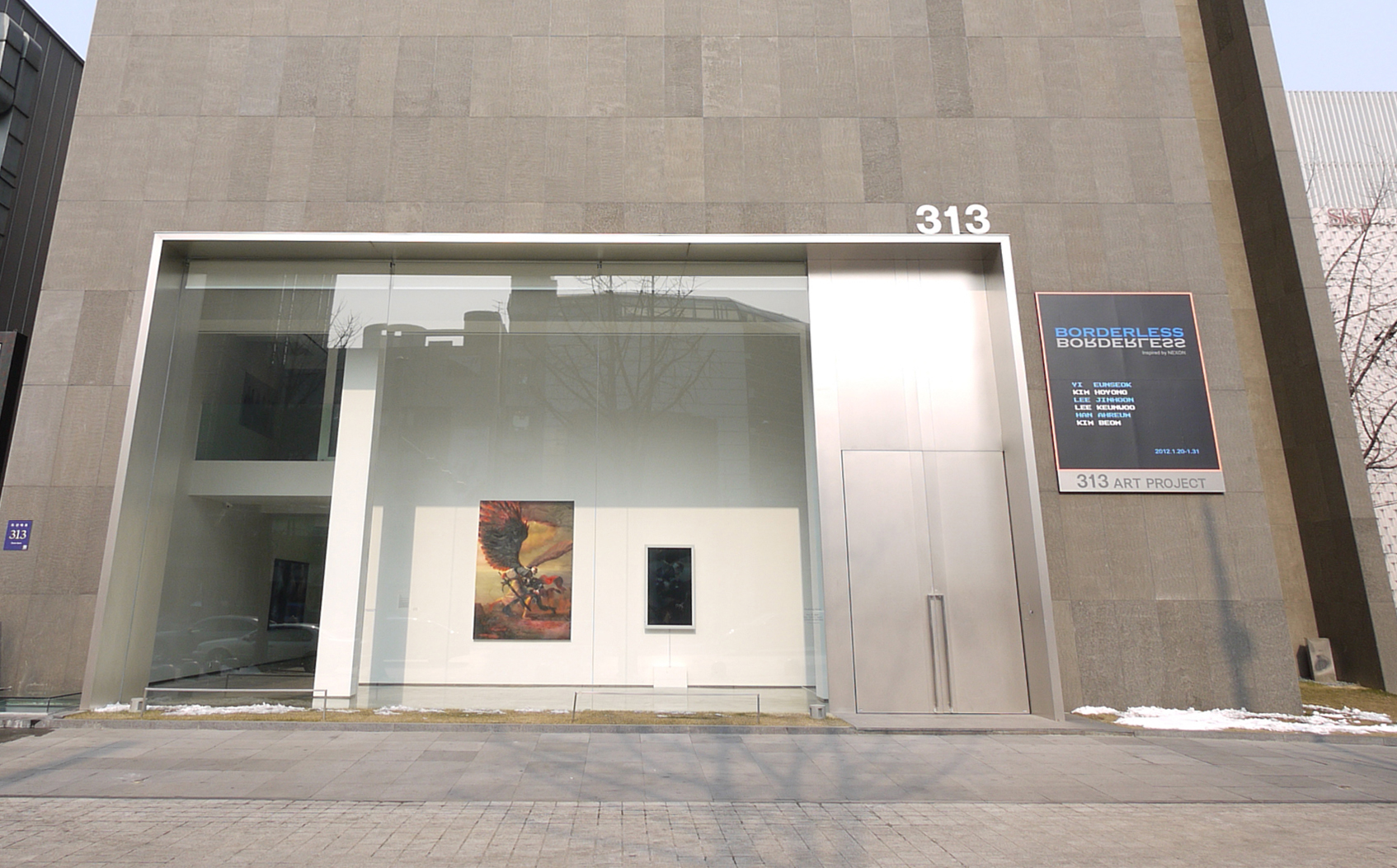February 8 – March 10, 2012
Ashley Bickerton graduated from California Institute of the Arts in 1982, and continued his studies through Whitney Museum Independent Program in New York. He was one of the original members of the group of artists that came to be known as “Neo-Geo” (abbreviated expression of Neo-Geometrical), which includes well known artist such as Jeff Koons and Peter Halley. Neo-Geo, started off in East Village of New York, produced satirical works denouncing the irony of contemporary society, using techniques of symbolizing or reproducing geometrical shapes. This group produced works emphasizing the ‘imitation’ based on the idea that modern capitalistic society is reproduced into imitative society. Yet this movement of art deceased among the depression following plummeted stock market in late 1980s New York. Bickerton also left New York around that time for Bali, promoting a new direction of artwork.
Having visited various places around the world as a child with his father, Bickerton presents a peculiar world of oeuvre that goes back and forth between the boundaries of primitive tribal culture and modern urban culture. He notes on the encounter of cultural entity domesticated to society with unpolished, natural entity, and the relational tension rising from it. The encounter and tension here is expressed by the artist based on assemblage of picturesque elements like images, industrial elements, and three-dimensional non-artistic elements. After settling in Bali, the artist developed interest in the ecological system and the environment, starting to collect and use sample of soils and industrial waste for his work. He is often compared to Paul Gaugin, for having voluntarily deviated from the Western civilization, moved to the tropical region and produced glamorous yet sensuous works. However, he is indeed a distinctive and unique artist in that he goes further to bluntly denounce the Western culture.
Bickerton’s paintings have always progressed within a dialectic of moralism and depravity. He paints motives such as social taboo of sex and race on the composition of color that is primitive and sensuous. His works exhibit a kitsch tendency yet always tell more than what it visually presents. By making use of a vulgar theme and unsophisticated color, the artist highlights on the shadows of modern dichotomous society that is full of sexual and racial discrimination and exploitation.
애슐리 비커튼은 1982년 California Institute of the Arts를 졸업한 후, 뉴욕의 Whitney Museum Independent Program에서 미술 공부를 지속했다. 그는 제프 쿤스, 피터 할러리, 메이어 바이어만과 같이 유명한 예술가들이 포함되어 있는 “네오 지오 (Neo-Geo)”의 선두 주자 중 하나였다. 네오 지오메트리컬 (Neo-Geometrical)의 약어인 네오 지오는 1980년대 뉴욕 이스트 빌리지 지역에서 시작된 예술 표현으로, 기하학적인 형태를 기호화하거나 복제시키는 방법을 통해 현대 사회가 가지고 있는 모순을 풍자하였다. 그들은 현대 소비사회가 재생산된 모방사회라는 사고를 기반으로 모방성을 강조하는 작품 활동을 주로 하였는데, 이러한 예술적 분위기는 80년대 말 증권 시장의 폭락과 맞물린 뉴욕의 좋지 않은 상황 속에서 결국 쇠퇴하였고, 이 즈음 비커튼 역시 뉴욕을 떠나 발리에서의 새로운 작품 활동을 시작하게 되었다.
어린 시절부터 아버지를 따라 세계 각지를 돌아다녀야 했던 비커튼은 원시 부족 문화와 삭막한 도시 문화의 경계를 넘나드는 기묘한 작품 세계를 보여준다. 그는 주로 사회에 길들여진 문화적인 실체와 날 것의 자연적 실체 사이의 만남, 그리고 그 관계적 긴장감에 중점을 두는데, 사진과 같은 회화적 요소와 산업 소재 그리고 3차원의 비예술적 재료들을 가미한 아쌍블라쥬(Assemblage)를 통해 이를 표현한다. 발리에 정착한 이 후, 생태계와 자연환경에 대해 관심을 가지게 되었으며, 토양 샘플을 채취하거나 공업 폐기물 등을 모아 작품의 소재로 활용하기 시작하였다. 자발적으로 서양의 문명에서 뛰쳐나와 열대 지방으로 이주해 화려하면서도 감각적 분위기의 작품을 만들어낸다는 점에서 종종 폴 고갱과 비교되지만, 자신의 고립 상태를 객관적으로 인지하고, 이를 토대로 서구 문화를 강렬하게 비판 한다는 점에서 비커튼은 자신만의 개성이 확실한 작가라 할 수 있다.
비커튼의 회화는 언제나 도덕성과 타락의 변증법을 중심으로 발전해왔다. 그는 사회적으로 금기시하는 성, 그리고 인종과 같은 주제를 원시적이면서도 감각적인 색의 구도 위에 그려낸다. 그의 작품은 키치적 성향을 가지고 있지만 내용적으로는 분명히 눈으로 보이는 그 이상에 대해 언제나 이야기한다. 가장 저속할 수 있는 소재의 선택과 정제되지 않은 색의 사용을 통해 그는 성차별, 인종차별, 비하, 착취 등의 모순된 이분법적 사회 구조가 만들어내는 어두운 이면의 문제에 주목한다.








